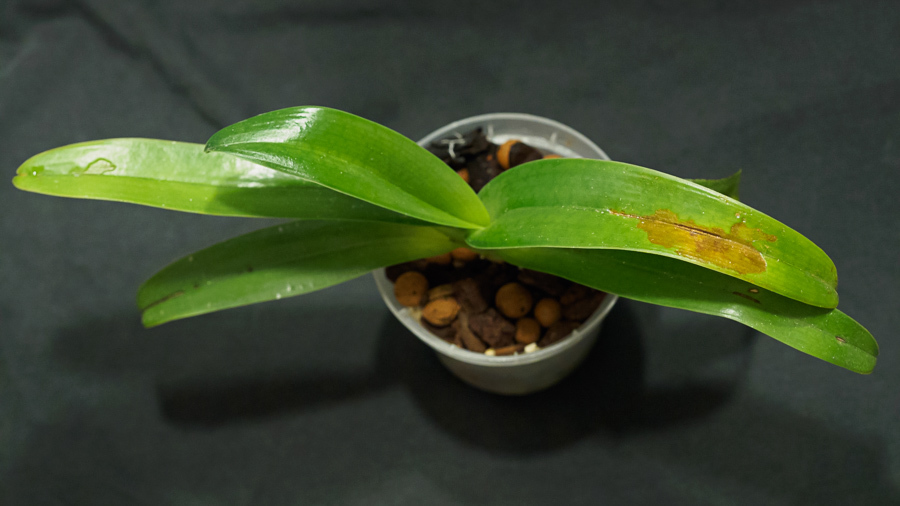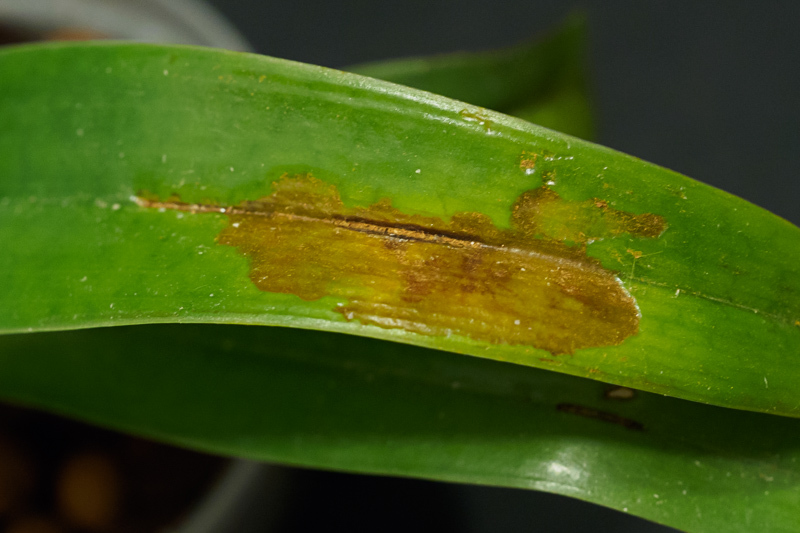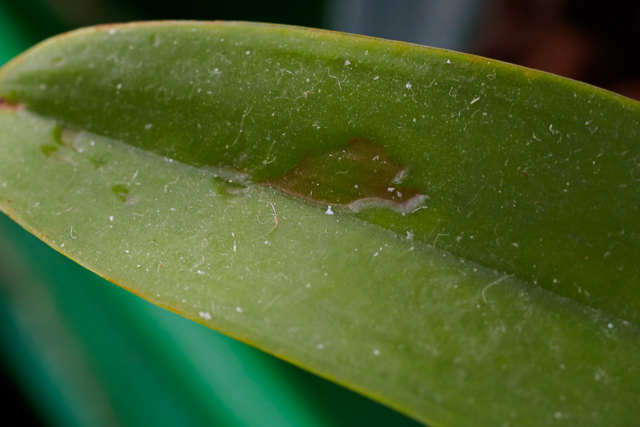Last week I noticed a brown spot on my Paph. philippinense var. album. I covered it in cinnamon powder to see if it would help, but now I see the spot has doubled in size. At this point I should probably remove the leaf completely, yes? Does this look bacterial, erwinia maybe?


There's another tiny spot on another leaf, should remove that as well? Should I treat with anything or would removing the affected tissue (or the whole leaf?) be enough?

Thank you!


There's another tiny spot on another leaf, should remove that as well? Should I treat with anything or would removing the affected tissue (or the whole leaf?) be enough?

Thank you!



